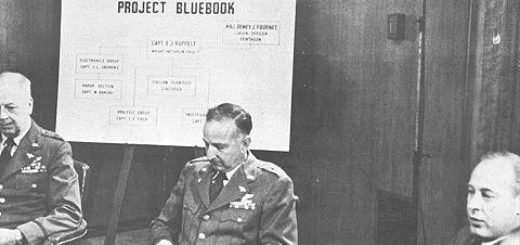What are Saturn’s rings made of?

Of all the planets, none seem to capture our fascination like Saturn. The fascination is likely due to the enormous rings that make the second largest planet a standout in our solar system. Although Jupiter, Uranus and Neptune have rings of their own, none are as spectacular as Saturn’s.
Saturn’s rings are also one of the great mysteries in space. But as our spacecraft edge closer than ever to the rings, we’re getting a more complete picture of what they’re made of and how they came to exist.
Saturn has seven main rings, each composed of thousands of tiny ringlets. The rings are huge — the biggest ones spanning 170,000 miles (273,588 km) in diameter. They are, however, proportionately very thin — only about 650 feet (200 meters) thick. They aren’t solid, as they appear from Earth, but are instead made up of floating chunks of water ice, rocks and dust that range in size from specks to enormous, house-sized pieces that orbit Saturn in a ring pattern. As the particles orbit, they collide constantly, shattering the larger pieces.
The rings aren’t perfect circles but instead have bends in them caused by the pull of gravity from nearby moons. The rings also contain spokes produced as very fine dust particles floating above the rings get attracted by static electricity and are pulled up above the rings.
The rings are named by letter — A, B, C, D, E, F and G. They’re not in alphabetical order, but are instead in the order in which they were discovered (the actual order, starting from Saturn, is — D, C, B, A, F, G and E).
A and B are the two brightest rings, and B is the widest and thickest of the seven rings. C is sometimes called the crepe ring, because it’s very transparent, and D is barely visible. The F ring is very narrow and held together by two moons — Pandora and Prometheus — that sit on either side of the ring. They are called shepherding moons because they control the movement of the particles in the ring.
Farther out is the G ring, and finally the E ring, which is made up of very fine (almost microscopic) particles. The E ring has been most puzzling to scientists, because unlike the other rings, which are believed to be made up of particles shed from nearby moons, E is thought to be made up of ice particles sprayed out of volcanic geysers near the south pole of the moon Enceladus. In between several of the rings are gaps named for the astronomers who have studied Saturn.
But how were the rings formed, and how old could they be? Find out next.
Scientists have pondered Saturn’s rings since Galileo peered at the planet through an early telescope in 1610. From the angle at which he observed it, Galileo surmised that Saturn wasn’t a single star, but was actually three: a large middle star with two earlike appendages sticking out of it, which he thought might be large moons. Galileo observed Saturn for more than a year. Then he took a break and didn’t look again until 1612, when he saw something unusual. Instead of the three-star formation that he had seen on his last viewing, Galileo saw just a single star. He correctly predicted that the other “stars” would return, but he couldn’t figure out why they had disappeared.
In 1655, Dutch scientist Christiaan Huygens answered the question that had so puzzled Galileo when he looked through a more sophisticated telescope. He decided that the extra stars were actually rings, which were thin enough to seemingly disappear when viewed on their edge. Today, scientists have a name for what Galileo and Huygens witnessed — the ring plane crossing. As Saturn travels around the sun, its rings appear edge-on to the Earth about once every 14 years. So when we look at the planet through a telescope during that time, the rings aren’t visible.
Huygens made one mistake in his evaluation of Saturn, however. He believed that the rings were solid. Five years later, French astronomer Jean Chapelain more accurately surmised that the rings were actually small particles orbiting around Saturn. Scottish physicist James Clerk Maxwell confirmed this theory in 1857 when he figured out that the rings had to be made of small particles; otherwise, they would be pulled inward by Saturn’s gravity until they crashed into the planet.
In the 20th and 21st century, astronomers have had the benefit of technology to help them discover the secrets of Saturn’s rings. In the late 1970s and early ’80s, the Pioneer and Voyager spacecrafts sent back close-up views of the rings and the particles that compose them. In recent years, the Cassini mission (a collaborative effort between NASA, the European Space Agency (ESA), and the Italian Space Agency (ASI)), has been able to circle even closer to Saturn’s rings and gather a great deal of new information about their structure.
An illustration of spacecraft Cassini in orbit around Saturn.
An illustration of spacecraft Cassini in orbit around Saturn.
TIME LIFE PICTURES/NASA/JPL/TIME LIFE PICTURES/GETTY IMAGES
As they have learned more and more about the composition of Saturn’s rings, scientists have also been questioning the rings’ origins. They believe that the rings were created when comets or asteroids collided with one or more of the planet’s moons, shattering them into many pieces. The fragments from the collision spread out around Saturn and formed into the current ring pattern.
What isn’t for sure is the age of the rings. At first they were thought to be as old as the solar system. Then scientists surmised that the ice in the rings should be far dirtier than it was if it had been gathering space dust for 4 billion years. They consequently moved the estimated age of the rings forward to tens of millions of years ago. But when the Cassini spacecraft sent back the clearest images yet of Saturn’s rings, scientists said the original estimate may have been correct after all. They believe it’s likely that the ring particles were recycled over 4 billion years, and that they will continue to exist long into the future.
To learn more about telescopes, stars and planet hunting, explore the links below.



 Creators of mankind
Creators of mankind Description of “Tall white aliens”
Description of “Tall white aliens” Where they came from?
Where they came from? About hostile civilizations
About hostile civilizations The war for the Earth
The war for the Earth “Tall white aliens” about eternal life
“Tall white aliens” about eternal life Video: “Nordic aliens”
Video: “Nordic aliens” Aliens
Aliens Alien encounters
Alien encounters The aliens base
The aliens base UFO
UFO Technology UFO
Technology UFO Underground civilization
Underground civilization Ancient alien artifacts
Ancient alien artifacts Military and UFO
Military and UFO Mysteries and hypotheses
Mysteries and hypotheses Scientific facts
Scientific facts


















